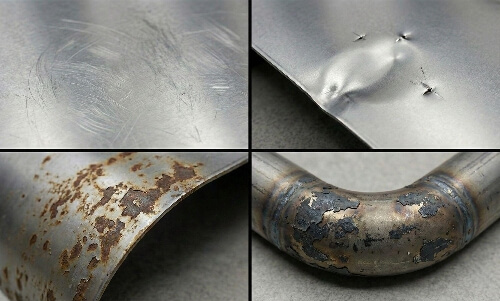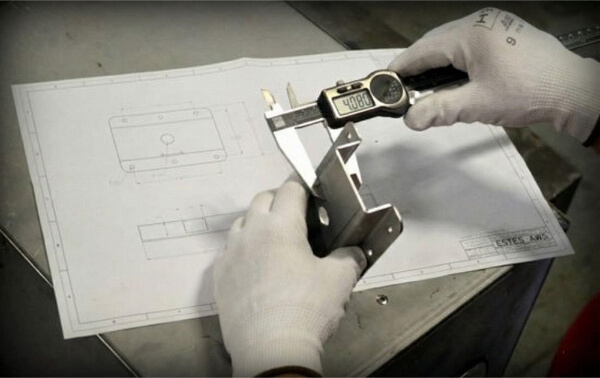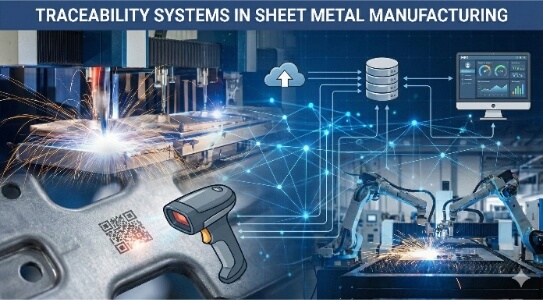O processo de fresagem pode aumentar ou diminuir a eficiência da produção aquando da conceção de uma peça ou componente. Já se perguntou como é que a fresagem lateral se enquadra neste contexto? A fresagem lateral oferece uma solução poderosa, mas pode perder os seus potenciais benefícios se não souber como funciona. Nesta publicação, vamos analisar a fresagem lateral e como pode ajudar o seu processo de fabrico.
Quer conhecer os pormenores da fresagem lateral? Iremos analisar o processo, as ferramentas e as aplicações para o ajudar a tomar melhores decisões de maquinação.
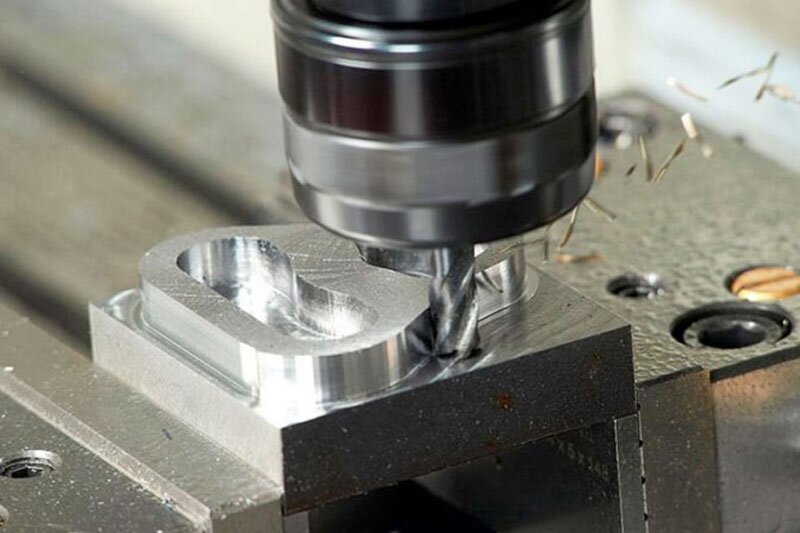
O que é a fresagem lateral?
A fresagem lateral é um processo em que uma fresa rotativa remove material do lado de uma peça de trabalho. A fresa tem dentes nos seus lados, que cortam o material à medida que se move ao longo das arestas. Isto cria superfícies planas, ranhuras ou perfis complexos. É normalmente utilizado para peças grandes ou de forma irregular que necessitam de dimensões precisas e acabamentos suaves.
Como é que a fresagem lateral funciona?
A fresagem lateral utiliza uma máquina de fresagem com uma fresa rotativa. A fresa desloca-se lateralmente ao longo da peça de trabalho, cortando o material. A mesa da máquina pode mover-se em diferentes direcções, permitindo um controlo preciso da profundidade e largura do corte.
Eis como funciona em passos simples:
- A peça de trabalho é fixada firmemente na mesa da máquina.
- A fresa roda a alta velocidade e desloca-se ao longo do lado da peça de trabalho.
- Os dentes da fresa removem o material, criando a forma ou superfície desejada.
- O líquido de refrigeração é frequentemente utilizado para reduzir o calor e proteger a ferramenta.
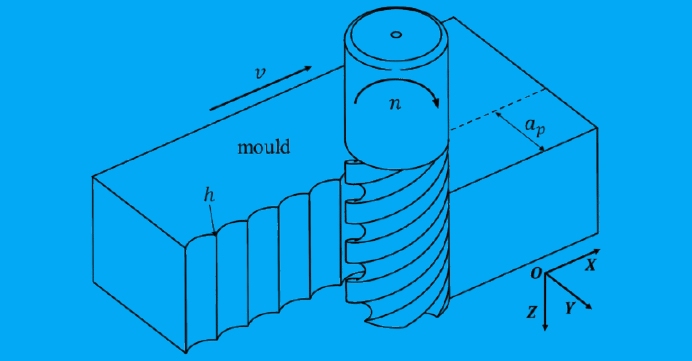
Componentes principais de uma operação de fresagem lateral
Uma operação de fresagem lateral envolve vários componentes críticos que trabalham em conjunto. Eis o que precisa de saber:
- Fresadora: O equipamento principal segura e movimenta o cortador. Pode ser horizontal ou vertical, consoante o trabalho a efetuar.
- Peça de trabalho: O material cortado é fixado firmemente na mesa da máquina para evitar movimentos.
- Cortador: A ferramenta rotativa com dentes que remove material da peça de trabalho.
- Sistema de refrigeração: Ajuda a reduzir o calor e a fricção, prolongando a vida útil da ferramenta e melhorando o acabamento.
- Sistema de controle: O operador pode ajustar a velocidade, a profundidade e a direção para obter cortes precisos.
Tipos de cortadores
A escolha da fresa correta faz uma grande diferença nos resultados da fresagem lateral. Cada tipo serve necessidades específicas.
Fresas planas
As fresas planas têm dentes rectos ou helicoidais na sua superfície exterior. Estas fresas essenciais funcionam bem para superfícies largas e planas. Os dentes cortam suavemente e espalham o calor pela ferramenta.
Fresas de faceamento
As fresas de faceamento têm dentes tanto na face como no diâmetro. Cortam duas superfícies de uma só vez - a lateral e a inferior. Isto torna-as perfeitas para cortes em esquadria e degraus.
Fresas de dentes escalonados
As fresas de dentes escalonados têm um padrão de espaçamento desigual entre dentes. Este design reduz a vibração e torna os cortes mais suaves. Os espaços entre os dentes ajudam a limpar melhor as aparas durante os cortes pesados.
Cortadores interbloqueados
Os cortadores interbloqueados utilizam vários discos montados em conjunto. Os dentes sobrepõem-se para efetuar cortes mais largos, mantendo-se estáveis. São excelentes para cortar ranhuras e ranhuras profundas sem deflexão.
Aplicações da fresagem lateral
A fresagem lateral adapta-se a muitas necessidades de maquinagem. Eis como os fabricantes a põem a funcionar.
Maquinação de superfícies planas
A fresagem lateral cria superfícies verticais precisas nas peças. A fresa rotativa desloca-se ao longo da aresta da peça de trabalho para remover material, criando esquadros e ângulos rectos precisos para peças que têm de ser encaixadas.
Acabamento de superfícies
O processo dá às peças um acabamento suave e limpo. Os dentes da fresa produzem uma textura de superfície uniforme. Múltiplas passagens de luz podem criar superfícies prontas para conjunto ou revestimento com um mínimo de trabalho adicional.
Fenda e ranhura
A fresagem lateral corta ranhuras e ranhuras precisas nas peças. A largura da fresa corresponde ao tamanho da ranhura necessária. Isto funciona muito bem para fazer ranhuras de chaveta, ranhuras em T e outras caraterísticas que mantêm as peças unidas.
Contorno e perfilagem
O método também dá forma a superfícies curvas e complexas. O cortador segue caminhos programados para criar perfis exactos, o que ajuda a fabricar peças como cavidades de moldes e componentes mecânicos personalizados.
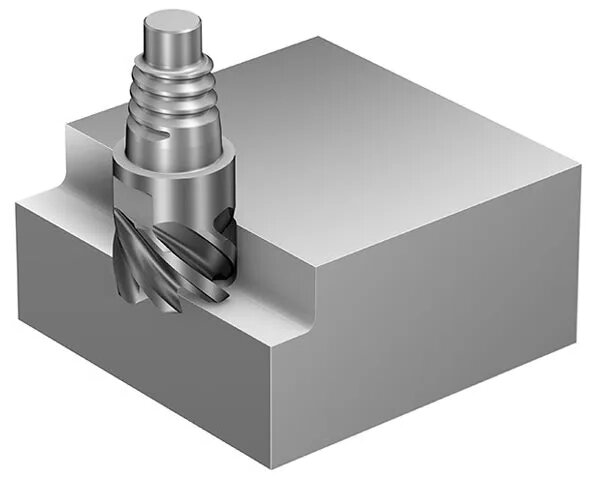
Considerações chave para uma fresagem lateral bem sucedida
A fresagem é um processo de maquinagem utilizado em todas as indústrias transformadoras. Vários factores-chave determinam a qualidade dos resultados da fresagem.
Velocidade da ferramenta de corte
A fresa funciona dentro de limites de velocidade específicos que afectam a qualidade do acabamento da superfície. Velocidades elevadas geram calor excessivo, causando um desgaste rápido da ferramenta. Velocidades baixas produzem cortes irregulares na peça de trabalho. Cada tipo de material necessita da sua definição de velocidade para obter resultados precisos e suaves.
Taxa de alimentação
A velocidade de avanço descreve a rapidez com que a peça de trabalho se move contra a ferramenta de corte. Os avanços elevados criam frequentemente superfícies rugosas e podem provocar a quebra e o desgaste da ferramenta. Taxas de avanço baixas podem não remover o material suficientemente bem, levando a uma má qualidade da superfície.
Experiência do operador
Um operador de fresadora experiente efectua cortes precisos e consistentes. Os operadores experientes sabem como definir os melhores parâmetros de corte, escolher as melhores taxas de avanço e selecionar as velocidades de corte adequadas. Conseguem detetar e corrigir problemas antes que estes afectem a qualidade da peça.
Conceção de ferramentas
A conceção das ferramentas de fresagem tem um impacto direto na qualidade do produto final. As caraterísticas críticas incluem os tipos de revestimento da ferramenta e o número de arestas de corte. As ferramentas com mais arestas de corte produzem normalmente acabamentos mais suaves. O desenho correto da ferramenta, em função dos requisitos do trabalho, conduz a melhores resultados e a uma remoção de material mais eficiente.
Vantagens da fresagem lateral
A fresagem lateral traz vários benefícios às operações de fabrico. Este método destaca-se na maquinagem moderna pela sua combinação de qualidade e velocidade.
Precisão e acabamento de superfície melhorados
A fresagem lateral cria peças altamente precisas com uma excelente qualidade de superfície. A ação de corte da ferramenta contra a peça de trabalho produz arestas limpas e rectas com tolerâncias apertadas. A rugosidade da superfície mantém-se baixa porque os dentes da fresa fazem um contacto consistente com o material.
Aumento da eficiência e da produtividade
A fresagem lateral remove o material mais rapidamente do que muitos outros métodos. O processo utiliza todo o comprimento da ferramenta de corte, o que significa que é retirado mais material em cada passagem. Uma configuração pode frequentemente completar várias operações, reduzindo o tempo de deslocação das peças entre máquinas.
Flexibilidade nos tipos de materiais e espessuras
A fresagem lateral funciona bem em muitos materiais e espessuras diferentes. O processo lida com tudo, desde o alumínio macio ao aço endurecido. As oficinas podem fresar chapas finas ou blocos grossos utilizando a mesma configuração básica, ajustando os parâmetros de corte.
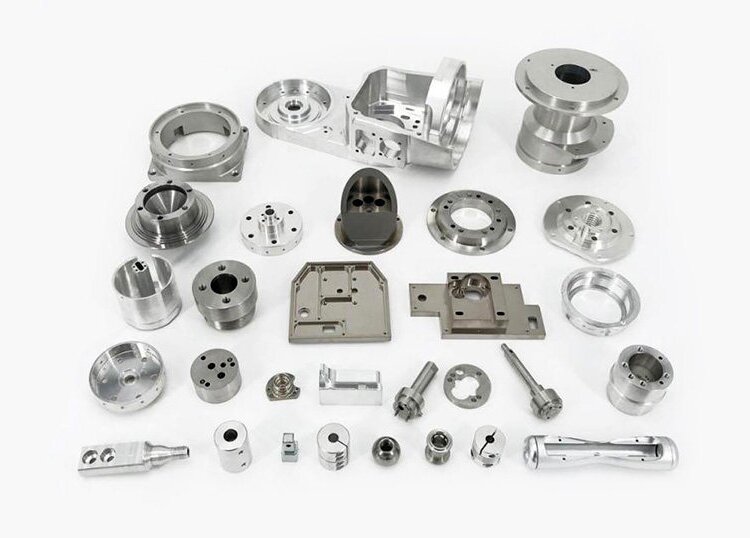
Desafios e limitações da fresagem lateral
Apesar das suas vantagens, a fresagem lateral apresenta desafios específicos que os maquinistas têm de gerir. Estas limitações afectam tanto a qualidade do processo como os resultados finais.
Desafios da taxa de remoção de material (MRR)
A taxa de remoção de material durante a fresagem lateral equilibra constantemente a velocidade e a qualidade. Taxas de remoção mais rápidas colocam mais tensão nas ferramentas de corte e nos componentes da máquina. Ao cortar materiais mais complexos, o calor acumula-se rapidamente na zona de corte. Este calor pode alterar as propriedades do material e causar a distorção da peça.
O desgaste da ferramenta e o seu impacto na qualidade da fresagem
O desgaste da ferramenta afecta todos os aspectos do processo de fresagem. À medida que as arestas de corte se desgastam, deixam superfícies mais ásperas e dimensões menos precisas. As ferramentas gastas necessitam de mais potência para cortar, o que gera mais calor e vibração.
Vibrações potenciais e seus efeitos sobre a precisão
A vibração durante a fresagem lateral prejudica a qualidade da peça e a vida útil da ferramenta. As ferramentas longas e finas tendem a tremer mais, criando superfícies onduladas e acabamentos pobres. Os cortes profundos aumentam o risco de vibração, pelo que os maquinistas necessitam frequentemente de várias passagens superficiais em vez de um corte profundo.
Fresagem lateral vs. outros métodos de fresagem
A fresagem lateral é apenas uma das muitas técnicas de fresagem. Para compreender as suas vantagens únicas, vamos compará-la com outros métodos padrão, como a fresagem frontal e a fresagem de ranhuras.
Comparação da fresagem lateral com a fresagem de faces
A fresagem lateral e a fresagem frontal são processos essenciais, mas têm objectivos diferentes. Eis como se comparam:
Área de corte:
- A fresagem lateral incide sobre os lados da peça de trabalho, criando superfícies planas ou ranhuras.
- A fresagem de face visa a superfície superior, produzindo acabamentos lisos ou planos.
Conceção de ferramentas:
- As fresas laterais têm dentes nos lados.
- As fresas de faceamento têm dentes na parte inferior e nos lados.
Formulários:
- A fresagem lateral é ideal para dar forma a arestas e criar ranhuras.
- A fresagem em face é melhor para o acabamento de superfícies grandes e planas.
Diferenças entre fresagem lateral e abertura de fendas
Fresagem lateral e ranhura são frequentemente confundidos, mas têm diferenças distintas:
Objetivo:
- A fresagem lateral molda os lados de uma peça de trabalho ou cria ranhuras largas.
- O corte de ranhuras destina-se especificamente ao corte de ranhuras ou ranhuras estreitas e precisas.
Movimento da ferramenta:
- Na fresagem lateral, a fresa desloca-se ao longo do lado da peça de trabalho.
- A fresa desloca-se verticalmente ou horizontalmente na ranhura para criar um corte estreito.
Conceção de ferramentas:
- As fresas laterais são mais largas e concebidas para cortes mais significativos.
- Os cortadores de ranhuras são mais estreitos e optimizados para precisão.
Conclusão
A fresagem lateral é um processo de maquinagem versátil e preciso utilizado para dar forma e acabamento aos lados de uma peça de trabalho. É ideal para criar superfícies planas, ranhuras e perfis complexos em vários materiais. Ao compreender o seu funcionamento e as ferramentas envolvidas, pode tomar decisões informadas sobre o seu projeto.
Se procura soluções de maquinagem especializadas ou precisa de orientação sobre os melhores métodos para o seu projeto, estamos aqui para ajudar. Contate-nos hoje para discutir os seus requisitos e descobrir como podemos dar vida às suas ideias de forma precisa e eficiente.
Olá, chamo-me Kevin Lee

Nos últimos 10 anos, tenho estado imerso em várias formas de fabrico de chapas metálicas, partilhando aqui ideias interessantes a partir das minhas experiências em diversas oficinas.
Entrar em contacto

Kevin Lee
Tenho mais de dez anos de experiência profissional no fabrico de chapas metálicas, especializando-me em corte a laser, dobragem, soldadura e técnicas de tratamento de superfícies. Como Diretor Técnico da Shengen, estou empenhado em resolver desafios complexos de fabrico e em promover a inovação e a qualidade em cada projeto.

